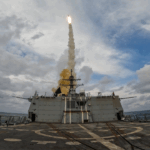
The conditions for further reducing the role and number of nuclear weapons in U.S. security strategy do not currently exist, according to the former policy director of the President Barack Obama administration’s 2010 Nuclear Posture Review.Brad Roberts, now the director of the Center for Global Security Research at the Lawrence Livermore National Laboratory, said Tuesday at the Carnegie Endowment for International Peace that the Defense Department’s Nuclear Posture Review consisted of “what we thought could reasonably be accomplished under certain optimistic…













